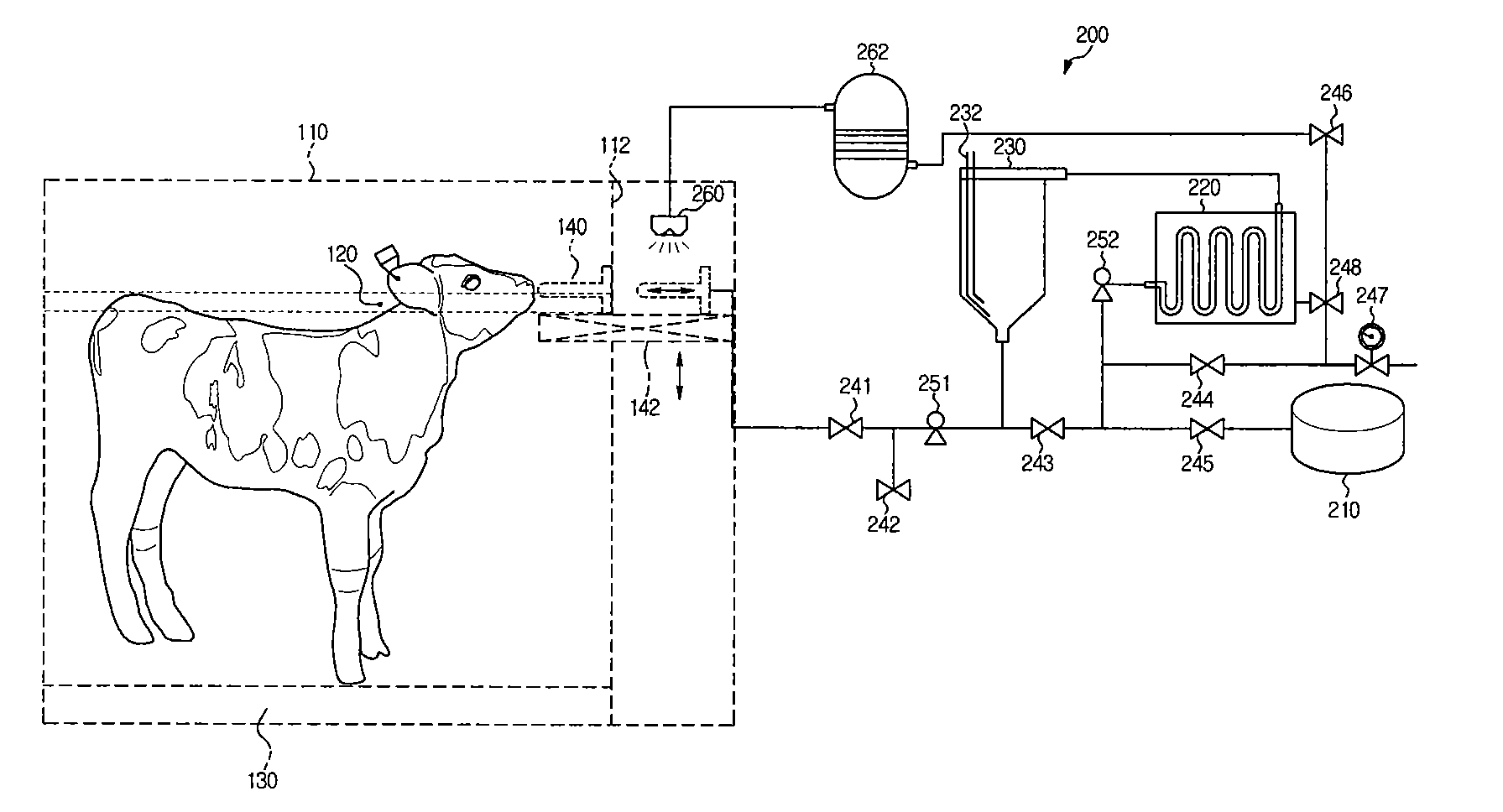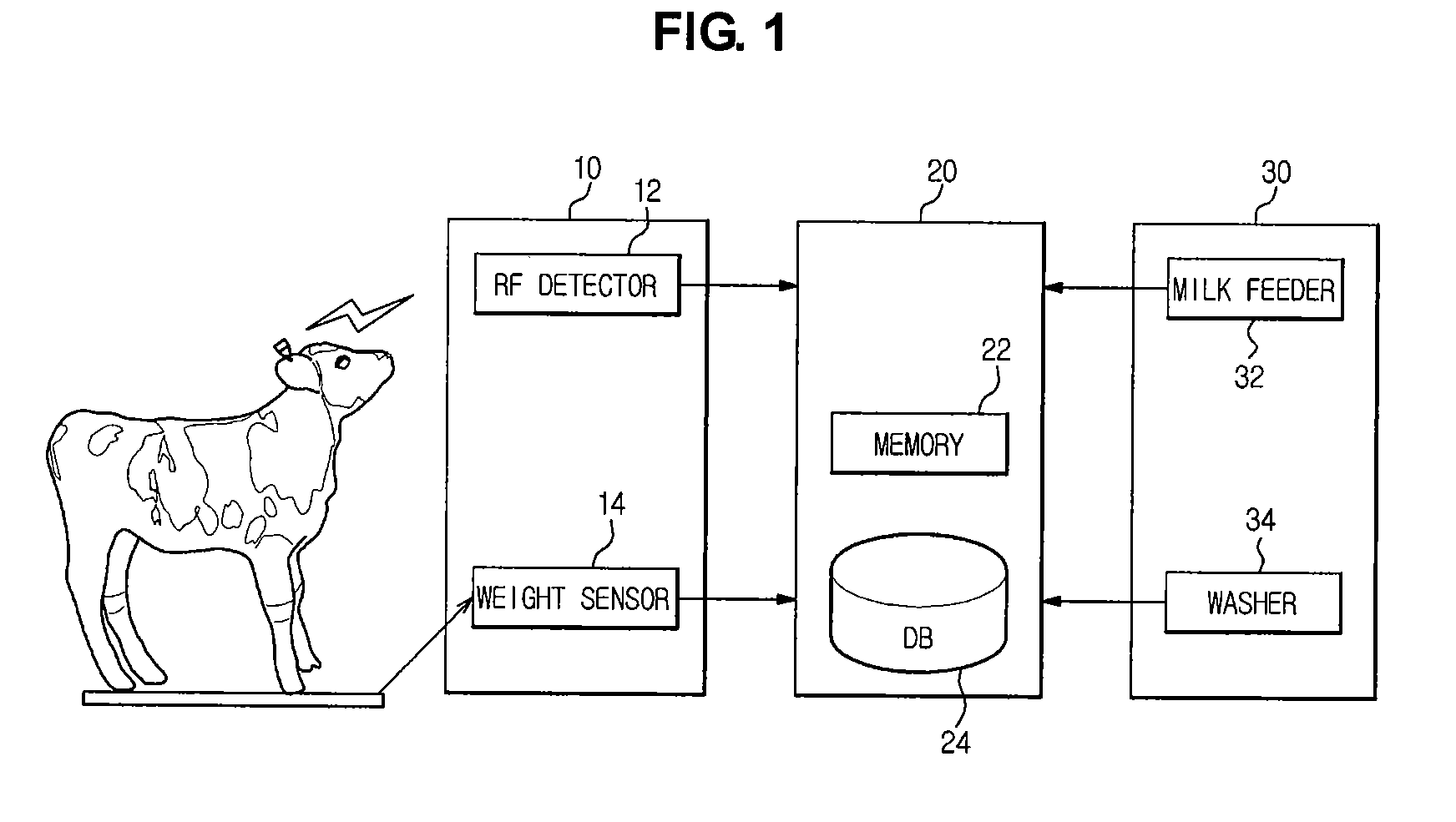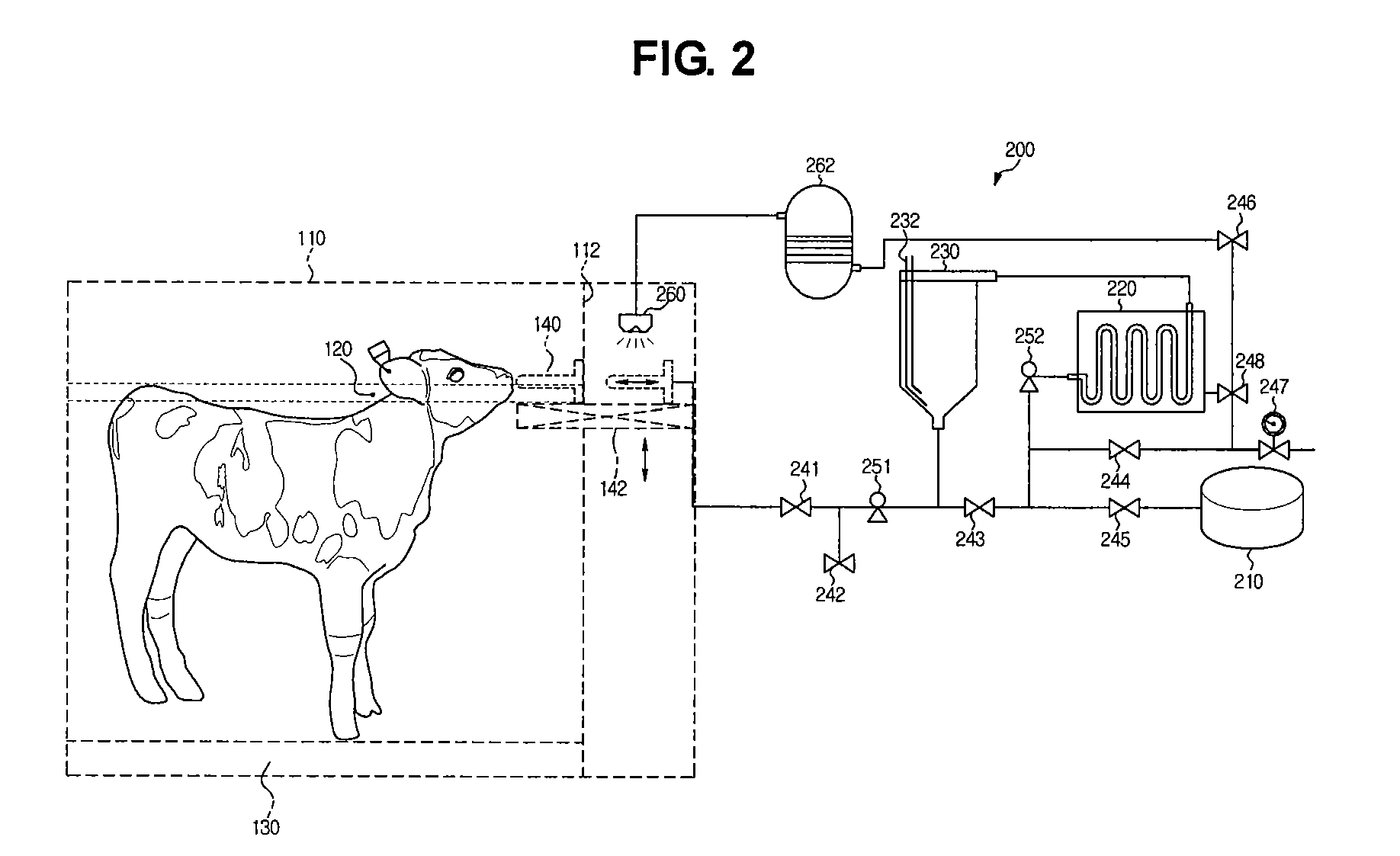Automatic suckling system for calves with minimal weaning stress
- Summary
- Abstract
- Description
- Claims
- Application Information
AI Technical Summary
Benefits of technology
Problems solved by technology
Method used
Image
Examples
Embodiment Construction
[0030]Reference will now be made in detail to the embodiments of the present invention, examples of which are illustrated in the accompanying drawings, wherein like reference numerals refer to the like elements throughout. The embodiments are described below to explain the present invention by referring to the figures.
[0031]FIG. 1 illustrates an automatic suckling system for calves with minimal weaning stress (hereinafter, simply referred to as a “suckling system”) according to one embodiment of the present invention.
[0032]Referring to the drawing, the suckling system comprises an input module 10 to receive calf information, a control module 20 to control milk feed amount depending on the input information, and an execution module 30 to perform milk-feeding.
[0033]The input module 10 comprises a detector 12 to identify a specific number assigned to calves, and a weight sensor 14 to measure weight of the calves. For example, the detector 12 may be a necklace worn round the neck of cal...
PUM
 Login to View More
Login to View More Abstract
Description
Claims
Application Information
 Login to View More
Login to View More - R&D Engineer
- R&D Manager
- IP Professional
- Industry Leading Data Capabilities
- Powerful AI technology
- Patent DNA Extraction
Browse by: Latest US Patents, China's latest patents, Technical Efficacy Thesaurus, Application Domain, Technology Topic, Popular Technical Reports.
© 2024 PatSnap. All rights reserved.Legal|Privacy policy|Modern Slavery Act Transparency Statement|Sitemap|About US| Contact US: help@patsnap.com










